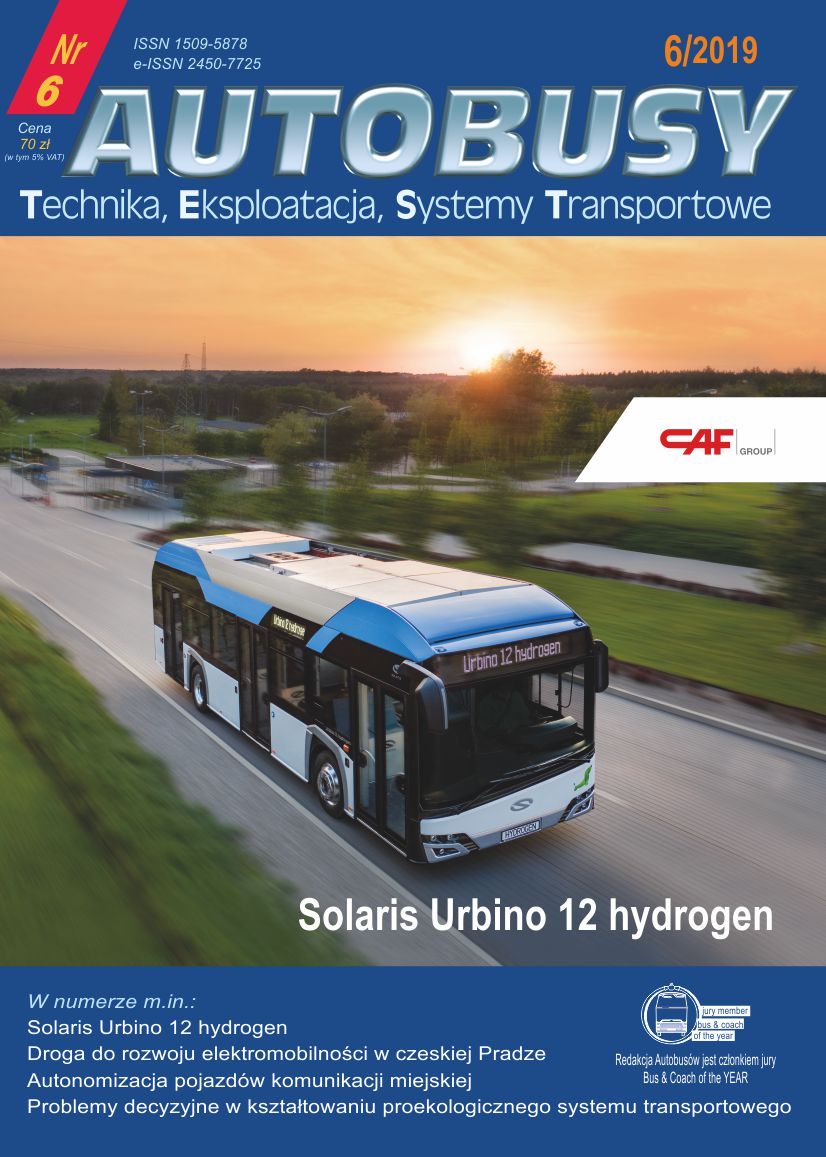Evaluation of selected practices in the field of urban logistics in Poland
DOI:
https://doi.org/10.24136/atest.2019.178Keywords:
city logistics, ITS, smart cities, urban freight in Polish cities, mobility strategiesAbstract
Dynamic growth of automotive indicator and increasing level of freight being carried in the Polish cities are causing serious transport problems. Migration to the cities is a trend observed still in Poland that is expected to continue. Bottlenecks, delivery obstacles, congestion, traffic jams and air pollutions require prompt organizational and technological intervention. The article starts a discussion about the condition of the urban logistics in Poland, comparing various models from the local government authorities point of view and inhabitants. The author outlines the barriers and obstacles in the planning and implementing of the modern urban logistical solutions. The majority of municipal and local government authorities, despite the declared enthusiasm for the smart city concept, prefer traditional infrastructure investments, instead of joint and interdisciplinary planning of the combined organizational and technological solutions tailored to the needs of a specific city. There is an urgent need to introduce regulations limiting freight traffic in the Polish cities, road tolls depending on emissivity, payloads, parking infrastructure. There should be rules planned determining time windows in the urban transport, organizing in-city consolidation centers, etc. The paper includes recommendations for creating Urban Vehicle Access Regulation Schemes for the Polish cities. The article includes also the findings and recommendation for the Polish cities in the field of urban logistics. The author emphasizes, however, that there is still a lack of long-term investment plans in the field of logistics and freight transport in so-called smart cities. The paper demonstrates that the efficiency of the functioning of Po-land?s urban logistics network does not necessarily imply cost-intensive infrastructural development. The optimization of logistics activities should be brought about in urbanized areas primarily based on the organisational changes in the transportation system, customs, habits and behavioral patterns of its users as well as the altered functions of selected. Such an approach is the closest to the views expressed by the inhabitants; however, it all too often proves contradictory to the interests of the other stakeholders of the system. Any changes to the city?s transport layouts or systems, or mobility policies (as a broader concept), call for a broad public contribution when it comes to consulting projects and designing the improvements. Organisational and financial support is likewise indispensable, along with the development of an incentives system. The author also pointed out a need to monitor comprehensively the solutions in the field of urban logistics and urban freight transport of the Polish cities using socio-economic analysis tools. The selected methods of evaluating the urban logistics solutions, incl. comparative best practices analysis, have been discussed.
Downloads
References
Zysińska M., Krysiuk C., Zakrzewski B., „Koncepcja smart cities w kontekście rozwoju systemów transportowych”, Logistyka 6/2014, 2014.
Tundys B., „Logistyka miejska”, Difin, 2008.
Final Report, “Use of Information and Communication Technologies”, European Commission, 2017.
Taniguchi E., Thompson R.G., City Logistics, Pergamon Press, 2010.
https://www.intelligenttransport.com/transport-articles/18367/public-transport-in-poland-2/, 1.03.2019.
Rzepnikowska M., Mikołajczak M., Antczak R., „Raport o korkach w 7 największych miastach Polski: Warszawa, Łódź, Wrocław, Kraków, Katowice, Poznań, Gdańsk”, Deloitte Targeo, 2014.
„Warszawska Polityka Mobilności 2016”, http://www.transport.um.warszawa.pl/sites/default/files/RAPORT%20WPM_1.pdf, 22.12.2018.
Badanie własne dotyczące preferencji mieszkańców i władz samo-rządowych w zakresie rozwiązań w logistyce miejskiej, Instytut Transportu Samochodowego, 2018r.



